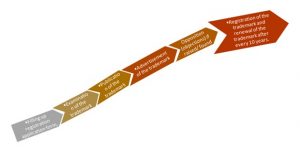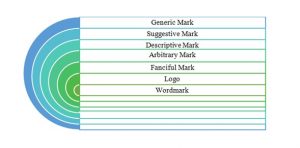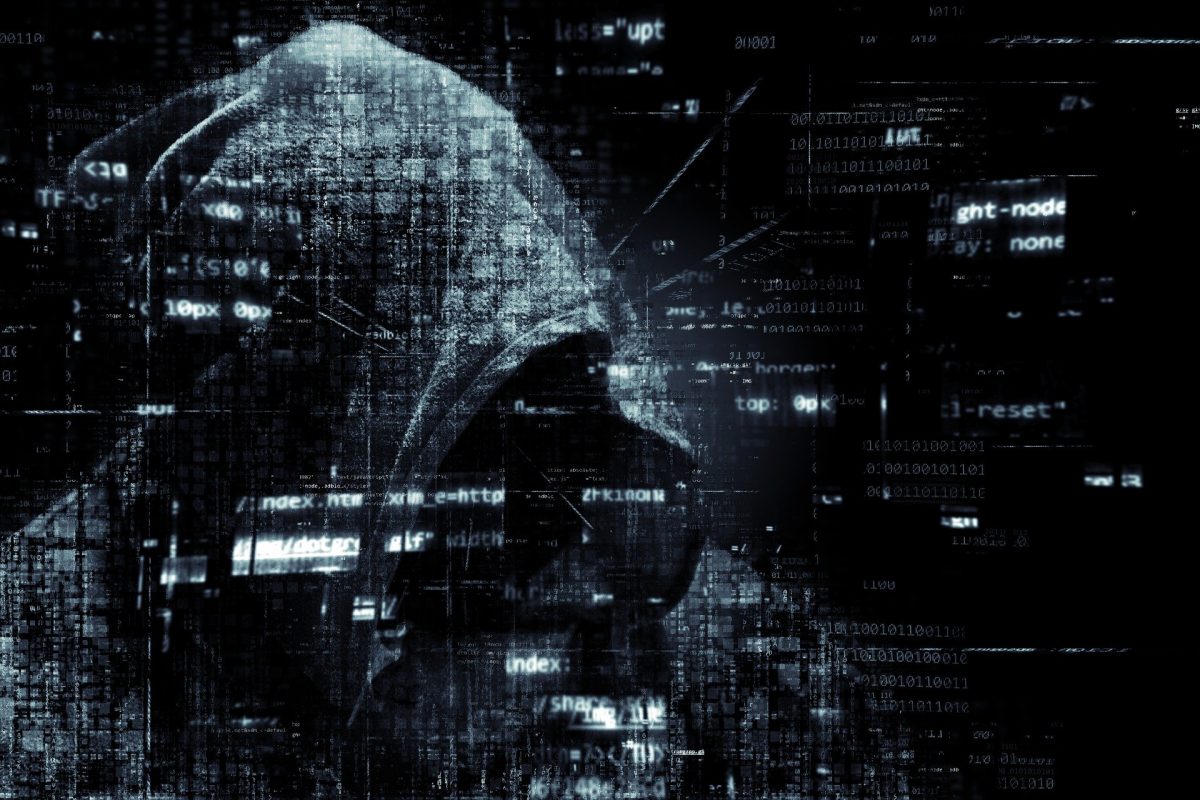By: Siddharth Sutaria
1.1.WHAT IS PATENT?
Patents were one of the first types of intellectual property to be recognized in modern legal systems. Today, patented inventions pervade every aspect of life, from electric lighting (patents held by Edison and Swan) to the iPhone (patents held by Apple).
Patents are a form of IP used to protect a product or process that is new, involves an inventive step and has some form of industrial utility.
Patents are concerned with the protection of an invention.
By patenting an invention, the patent owner gets exclusive rights over it, meaning that he or she can stop anyone from using, making or selling the invention without permission. The patent lasts for a limited period of time, generally 20 years. In return, the patent owner has to disclose full details of the invention in the published patent documents. Once the period of protection has come to an end, the invention becomes off patent, meaning anyone is free to make, sell or use it.
1.2.WHAT TYPE OF INVENTIONS ARE PATENTABLE?
PATENTABLE SUBJECT MATTER:
In order to be eligible for patent protection, an invention must fall under ARTICLE 27.1 OF THE TRIPS AGREEMENT. Provided that, subject to certain exception or conditions under that agreement, patents shall be available for any invention, whether products or processes, in all fields of technology, provided that they are new, involve an inventive step and are capable of an industrial application.[1]To qualify for patent protection, an invention must be of some practical use and must offer something new which is not part of the existing body of knowledge in the relevant technical field (what lawyers call the prior art). But these requirements of utility and novelty are not enough; the invention must also involve an inventive step – something non-obvious that could not just have been deduced by someone with average knowledge of the technical field.[2]
Furthermore, the invention must not fall under non- patentable subject matter, such as,
- A mere idea (e.g., law of nature or principle) without application are not patentable.
- Pure mathematical algorithms (e.g., E = mc2) are not patentable.
- An inoperable device (e.g., Perpetual Motion Machine) are not patentable.
- An obvious improvement of an old device is not patentable.
Learn more about Intellectual Property Rights with Enhelion’s Online Law firm certified Master Course!
PATENT LAWS IN INDIA, USA AND UK
2.1. INDIA
The recognition and enforcement of patent rights in India is principally governed by the Patents Act 1970 and the rules issued under the Act. The Act has been amended several times and was substantially amended by the Patents (Amendment) Act 2005 to bring the Indian patent regime into line with the WTO Agreement on Trade-Related Aspects of Intellectual Property Rights 1994 (TRIPs).
The latest amendment to the Patents (Amendment) Rules 2019 came into force on 17 September 2019 to ease the procedural rules concerning e-filing of documents under which original documents will be required only on being requested by the Patent office. The amendment also expanded the eligibility criteria for expedited examination of applications under the Patents Act, 1970 to include applicants such as small entities, government departments, and government-funded bodies and so on.
Court decisions are a relevant source of patent law in India. Indian courts also rely on decisions of both European and US courts as sources of patent law. In the last couple of years, Indian courts have adjudicated on a number of substantive patent law issues, including:
- Infringement (Merck Sharpe and Dohme Corporation v Glenmark)[3]; F Hoffman La Roche v Cipla Ltd.)[4]
- Patentability (Novartis v Union of India)[5]; Merck Sharpe and Dohme Corporation v Glenmark[6]; F. Hoffman La Roche v Cipla Ltd.[7]).
- Fair, reasonable and non-discriminatory licensing (Telefonaktiebolaget LM Ericsson v Intex Technologies[8]; Telefonaktiebolaget LM Ericsson v M/s Best IT World (India) Pvt Ltd (iBall)[9].).
- Permissibility of exports under the Indian Bolar Exemption (Bayer Corporation v Union of India & Ors. LPA No. 359/2017 and Bayer Intellectual Property GMBH & Anr. v Alembic Pharmaceuticals Ltd.)[10]
- Grant of patent for computer programs (Ferid Allani v Union of India).[11]
The Indian Patent Act, 1970 holds that a mere discovery of a new form of a known substance or the mere discovery of a new use of a known substance would not be patentable.[12] India being a party to the TRIPS Agreement expressly incorporates within its domestic legislation the ‘Patentable Subject Matter’, enumerated in Article 27 of the TRIPS Agreement, which reads as: “Subject to the provisions of paragraphs 2 and 3, patents shall be available for any inventions, whether products or processes, in all fields of technology, provided that they are new, involve an inventive step and are capable of industrial application[13] which indicates the qualification of the Novelty-Utility-Non Obviousness test.
Learn more about Intellectual Property Rights with Enhelion’s Online Law firm certified Master Course!
“Invention” means a new product or process involving an inventive step and capable of industrial application[14]. A bare perusal of the definition clearly shows that even a process involving an inventive step in an invention within the meaning of the Act. It is, therefore, not necessary that the product developed should be a totally new product. Even if a product is substantially improved by an inventive step, it would be termed an invention[15]. What is to be noted here is that patents are not only given on “new inventions” but also on “inventions” as defined in the Patents Act, 1970.
Patent protection cannot be obtained for a “mere idea”[16]. The principle of Patent Law is that an idea or discovery as such is not patentable. It neither forms a part of prior art or technique. It is the practical application of the idea or discovery that leads to patentability.
Inventive step is a feature of an invention that involves technical as compared to the existing knowledge or having economic significance or both and that makes an invention not obvious to a person skilled in the art. To meet the inventive step, there has to be a technical advancement or economic significance or both. The requirement of technical advancements, therefore, diluted and compromised by the fact that a patent could simply be granted on economic significance alone.[17]
2.2.UNITED STATES OF AMERICA
Under United States law, a patent is a right granted to the inventor of a (1) process, machine, article of manufacture, or composition of matter, (2) that is new, useful, and non-obvious. A patent is the right to exclude others, for a limited time (usually, 20 years) from profiting of a patented technology without the consent of the patent-holder. Specifically, it is the right to exclude others from: making, using, selling, offering for sale, importing, inducing others to infringe, applying for an FDA approval, and/or offering a product specially adapted for practice of the patent.[18]
United States patent law is codified in Title 35 of the United States Code, and authorized by the U.S. Constitution, in Article One, section 8, clause 8, which states:
The Congress shall have power … To promote the progress of science and useful arts, by securing for limited times to authors and inventors the exclusive right to their respective writings and discoveries.[19]
The first US Patent statute was enacted with the object entitled “An Act to promote the Progress of Useful Arts”. It was a short Act that contained seven sections and specified the basic requirement to include “any useful art, manufacture, engine, machine or device, or any improvement therein not before known or used”.
Learn more about Intellectual Property Rights with Enhelion’s Online Law firm certified Master Course!
After U.S. became the member of the Paris Convention, there were two developments in U.S. influencing the development of patent law, the Sherman Act of 1890 and the Evarts Act of 1891. In 1952, the structure of modern patent law was adopted and since then, several amendments have been made. The Patent law is Title 35 of the United States Code which governs all cases in the USPTO.
2.3. UNITED KINGDOM
In Europe, two patent systems co-exist. Under the European Patent Organization (EPO & EPOrg) patents are granted which may cover up to 38 European states including the United Kingdom. The provisions for grant of patents in U.K. can be considered from the U.K. Patents Act 1977 (As amended) and also from the EPC (European Patent Convention).
The UK has legal systems in England and Wales, Northern Ireland and Scotland, but the Patent law on the necessary changes is the same for everyone. There are two ways to obtain patent protection in the UK which includes filing in national patent offices and filing a single European patent at the European Patent Office in Munich defining those countries where the patent is protected. The latter machine offers great cost benefits to those who are patented.
Learn more about Intellectual Property Rights with Enhelion’s Online Law firm certified Master Course!
Patent enforcement in the UK means that the owner must continue to see the laws of each country where the patent is registered. The patent system in the UK is expensive and the results of the enforcement plan may not be consistent but the system is complete and therefore very effective in eliminating flawed patents.[20]
It is also important to note the availability of threat actions and cost penalties to deter the casual assertion of weak claims. A peculiarity of the European patent system is that once the patent is granted by the European patent office it transforms to local patents in each of the signatory countries that were designated in the application.
Learn more about Intellectual Property Rights with Enhelion’s Online Law firm certified Master Course!
COMPARATIVE ANALYSIS
3.1. SIMILARITIES IN PATENT LAWS OF INDIA, USA AND UK
Patent laws in India, USA and UK are very similar as they all grant developers certain rights for a specified period of time in exchange for their disclosure in relation to the established production method. The legal systems of the USA, UK and India have some of the same characteristics which are the general requirements of Novelty, Non-transparency / initiative to create and use inventions that must be patented. The basic principles of Patent law are generally the same worldwide; the difference lies mainly in the processes of each program.
Although a few aspects of patent law have been harmonized internationally, there are still many significant differences between the processes followed in the USA, UK and India discussed in this study.
3.2. DISTINCTION BETWEEN THE PATENT LAWS OF INDIA, USA AND UK
In UK [Article 60 of the EPC] and India[Section 2(y), 6 and 7 of the Patents (Amendment) Act, 2005], the first to have filed the patent application are considered as the inventor which means that the filing date is what is considered and is given the first priority even if a second person comes up with the invention before the first. Which in case of USA, in case of two or more applications for the same invention a determination is made as to who invented it first. If two or more applications are filed by different inventors claiming substantially the same patentable invention a proceeding known as an “interference” is instituted by the USPTO to determine who is the first inventor and entitled to the patent. (35 U.S.C. Section 135) provided that the patent has not been issued, nor the application been published, for more than one year prior to the filing of the conflicting application, and provided also that the conflicting application is not barred from being patentable for some other reason. However, the first applicant to file has the prima facie right to the grant of a patent, but if the second patent application is been filed for the same invention, the second applicant can lodge interference proceedings to determine who was the first inventor and thereby who is entitled to the grant of a patent.Thus in the US, the patent goes to the first to invent and not to the first to file. Every Patent Office in the world is based on a “first to file” system.
US has a one-year grace period (35 US Code Section 102). This means that the inventor can publish his invention 1 year before filing the patent without losing patent rights. However, if the inventor discloses his or her own work more than 1 year before the filing of the patent application, then he/she is barred from obtaining a patent.Whilst in UK [Article 54 EPC] and India [Sections 2(l), 29, 30 and 31 of the Patents (amendment) Act, 2005], the one-year grace period is absent. If an inventor makes his/her work public a year before he files a patent for the said work, he/sheautomatically loses all potential patent rights.
Learn more about Intellectual Property Rights with Enhelion’s Online Law firm certified Master Course!
The patent for a business method is an important point of distinction between the USA, the UK and India. Business method patents are not owned and have never been patented in the UK or any other country in Europe and in India business methods are not patented individually but can be patented if the new approach seeks to resolve the technical problem and is naturally structured. Or, in the case of the USA, patents for business methods are valid as long as it is more than just the implementation of a well-known business process.
India, USA and UK have a similar situation with patent applications i.e., patent applications are published 18 months after the date of submission, unless they have been issued. The only difference is that, in the UK and India they cannot apply for non-publication.
In the UK, once a patent has been granted, anyone has the right to oppose it within nine months of the grant. If a Patent is found to be invalid, it is revoked in all countries at the same time. Indian Patent Law only applies to patent disputes where the patent application was published but before the patent was granted. While the USA has a re-examination process that is different from that of the opposition party. In re-examination, anyone can submit reasons and evidence to the USPTO to challenge the validity of a patent granted.
3.3.CONCLUSION
This paper aims to shed light on the most common patent systems in India, the UK and the US and identifies significant similarities and differences between similarities.
By carefully examining the patent laws of the USA, India and the UK, it can be said that the patent process in India is almost identical to that of the UK and differs from that of the USA. Almost every country has its own Patent Law, and if you wish to apply for a Patent in a certain country, you must apply for a Patent in that country, depending on the needs of that country. Patent laws do not apply internationally.
Overall, efforts should be made to bring in patent laws of different countries in order to overcome errors, unfair advantages and lacunae in relation to certain areas of law. This is an important step in raising profits for founders around the world.
[1]Intellectual Property- Law and Management by Rodney D Ryder.
[2]https://www.wipo.int/publications/en/details.jsp?id=4528
[3]CS(OS) 586/2013 judgment dated 7 October 2015.
[4]RFA(OS) 92/2012, judgment dated 27 November 2015.
[5](2013) 6 SCC 1.
[6]supra
[7] supra
[8]Cs(Os) No.1045/2014, judgment dated 13 March 2015.
[9]CS (OS) 2501/2015, judgment dated 2 September 2015.
[10]RFA(OS)(COMM) 6/2017 (March 22, 2019), Division Bench of the Delhi High Court (Bayer cases).
[11] 2019 SCC Del 11867.
[12] Commission of Intellectual Property Rights (CIPR) Report of September, 2002.
[13] Article 27, TRIPS Agreement.
[14] Section 2 (1) (j), Patents Act, 1970.
[15] Dhanpat Seth v. Nil Kamal Plastic Crates Ltd., 2008 (36) P.T.C. 123 (H.P.) (D.B.).
[16] IBM Corp.’s Appln., [1980] F.S.R. 568.
[17] Ram NarainKher v. Ambassador Industries, New Delhi, A.I.R. 1976 Del 87
[18]35 U.S.C.A. § 154(a)(2).
[19]https://en.wikipedia.org/wiki/United_States_patent_law#cite_note-1
[20] International Patent Law, ISBN 978-1-587-62382-0, Lucas Bateman, Cobbetts Solicitors, Leeds.
Learn more about Intellectual Property Rights with Enhelion’s Online Law firm certified Master Course!




